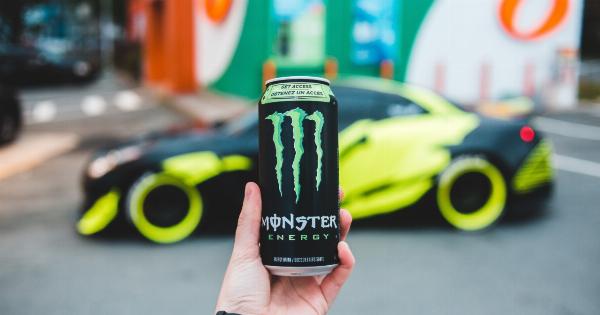Energy drinks have become increasingly popular in recent years, particularly among individuals seeking a quick boost of energy and alertness.
These beverages often contain high levels of caffeine and other stimulants, which can have both positive and negative effects on the body. However, for individuals with low iron levels, or those who are at risk of developing iron deficiency, consuming energy drinks may not be the safest or healthiest choice.
Understanding iron deficiency
Iron is an essential mineral that plays a vital role in many important bodily functions, including the production of red blood cells and the transportation of oxygen throughout the body.
Iron deficiency occurs when the body does not have enough iron to meet its needs, leading to a variety of symptoms such as fatigue, weakness, and decreased cognitive function.
Iron deficiency is particularly common among certain groups of people, including pregnant women, infants, young children, and individuals with a poor diet or certain medical conditions.
For these individuals, it is crucial to consume a diet rich in iron or take iron supplements to maintain healthy iron levels.
The potential risks of energy drinks
While energy drinks may provide a temporary boost of energy and alertness, they can also pose various risks, particularly for individuals with low iron levels.
Here are some reasons why consuming energy drinks may not be safe for individuals with low iron:.
1. Caffeine content
Most energy drinks contain high levels of caffeine, which is a stimulant that can increase heart rate and blood pressure.
While caffeine is generally safe in moderation, it can inhibit the body’s absorption of iron, leading to a further decrease in iron levels.
Individuals with low iron levels should be cautious when consuming beverages that contain caffeine, as it may exacerbate their iron deficiency.
It is important to note that excessive caffeine consumption can also lead to other health issues, including insomnia, digestive problems, and increased anxiety.
2. Lack of essential nutrients
Energy drinks are often low in essential nutrients, such as iron, due to their formulation primarily focused on providing a quick energy boost.
Individuals with low iron levels should prioritize consuming foods and beverages that are rich in iron, such as red meat, spinach, lentils, and fortified cereals.
By choosing energy drinks over iron-rich foods, individuals may further deplete their iron levels, exacerbating their deficiency and increasing the risk of developing iron deficiency anemia.
3. Negative impact on appetite
Regular consumption of energy drinks can also have a negative impact on appetite, leading to a decreased intake of iron-rich foods.
The high caffeine content in energy drinks may suppress appetite, causing individuals to skip meals or opt for less nutritious food choices.
This can be particularly problematic for individuals with low iron levels, as it reduces their intake of iron and other essential nutrients needed for overall health and well-being.
4. Dehydration
Energy drinks are known to have diuretic effects, meaning they can increase urine production and lead to dehydration. Dehydration can negatively affect the body’s ability to absorb nutrients, including iron.
Individuals with low iron levels should strive to maintain proper hydration levels to optimize iron absorption. Consuming energy drinks may contribute to dehydration, which can further exacerbate their existing iron deficiency.
5. Unknown long-term effects
There is still limited research on the long-term effects of consuming energy drinks, particularly in individuals with low iron levels.
While short-term consumption of energy drinks may provide a temporary energy boost, the potential long-term risks and consequences are not yet fully understood.
It is important for individuals with low iron levels to focus on a balanced diet that includes iron-rich foods, in consultation with a healthcare professional, rather than relying on energy drinks as a solution for fatigue or low energy levels.
Alternative energy-boosting strategies
For individuals with low iron levels or those at risk of iron deficiency, there are several alternative strategies to boost energy levels safely:.
1. Improve dietary iron intake
Aim to include a variety of iron-rich foods in your diet, such as lean red meat, poultry, fish, spinach, tofu, lentils, fortified cereals, and beans. Pairing these foods with vitamin C-rich foods can enhance iron absorption.
2. Consider iron supplementation
If you are unable to meet your iron needs through diet alone, consult with a healthcare professional about the possibility of taking iron supplements. They can help determine the right dosage and type of iron supplement for your specific needs.
3. Optimize sleep and stress levels
Poor sleep quality and chronic stress can contribute to low energy levels. Prioritizing quality sleep and finding healthy ways to manage stress, such as through exercise or relaxation techniques, can have a significant impact on energy levels.
4. Stay hydrated
Proper hydration is essential for overall health and energy levels. Aim to consume an adequate amount of water throughout the day to support optimal bodily functions.
5. Choose natural energy-boosting foods
Incorporate foods that naturally boost energy levels into your diet. This can include foods such as berries, nuts, seeds, whole grains, and green leafy vegetables.
The bottom line
While energy drinks may provide a quick energy boost, they are not the safest or most effective solution for individuals with low iron levels.
The potential risks associated with consuming energy drinks, such as inhibiting iron absorption, decreasing appetite for iron-rich foods, and potential dehydration, outweigh the short-term benefits.
Individuals with low iron levels should prioritize a balanced diet that includes iron-rich foods and consult with a healthcare professional.
Opting for natural and healthier strategies to boost energy levels, such as improving diet, considering iron supplementation, optimizing sleep and stress levels, and staying hydrated, can have more sustainable and long-lasting effects.































